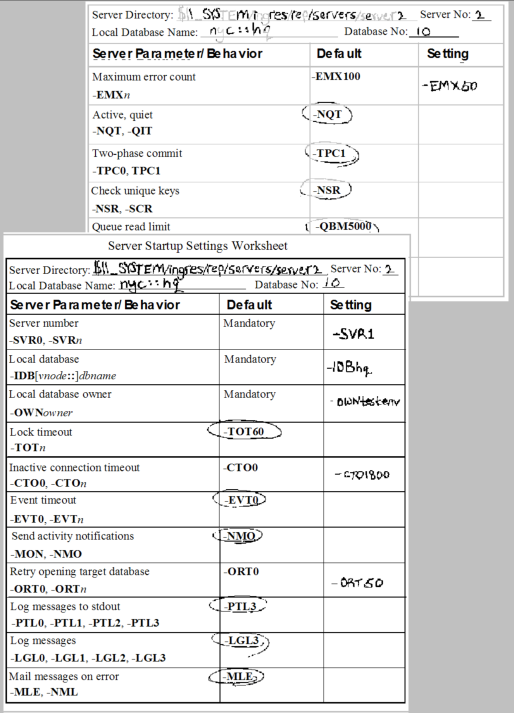
Server Directory:_________________ Local Database Name:____________ | Server No:___________________ Database No.:________________ | |
Server Parameter/Behavior | Default | Setting |
Server number -SVR0, -SVRn | Mandatory | |
Local database -IDB[vnode::]dbname | Mandatory | |
Local database owner -OWNowner | Mandatory | |
Lock timeout -TOTn | -TOT60 | |
Inactive connection timeout -CTO0, -CTOn | -CTO0 | |
Event timeout -EVT0, -EVTn | -EVT0 | |
Send activity notifIcations -MON, -NMO | -NMO | |
Retry opening target databases -ORT0, -ORTn | -ORT0 | |
Log messages to stdout -PTL0, -PTL1, -PTL2, -PTL3 | -PTL3 | |
Log messages -LGL0, -LGL1, -LGL2, -LGL3 | -LGL3 | |
Mail messages on error -MLE, -NML | -MLE | |
Maximum error count -EMXn | -EMX100 | |
Active quiet -NQT, -QIT | -NQT | |
Two-phase commit -TPC0, -TPC1 | -TPC1 | |
Check unique keys -NSR, -SCR | -NSR | |
Queue read limit -QBMn | -QBM50000 | |
Transaction break limit -QBTn | -QBT4000 | |
Single-run server -SGL | None | |
